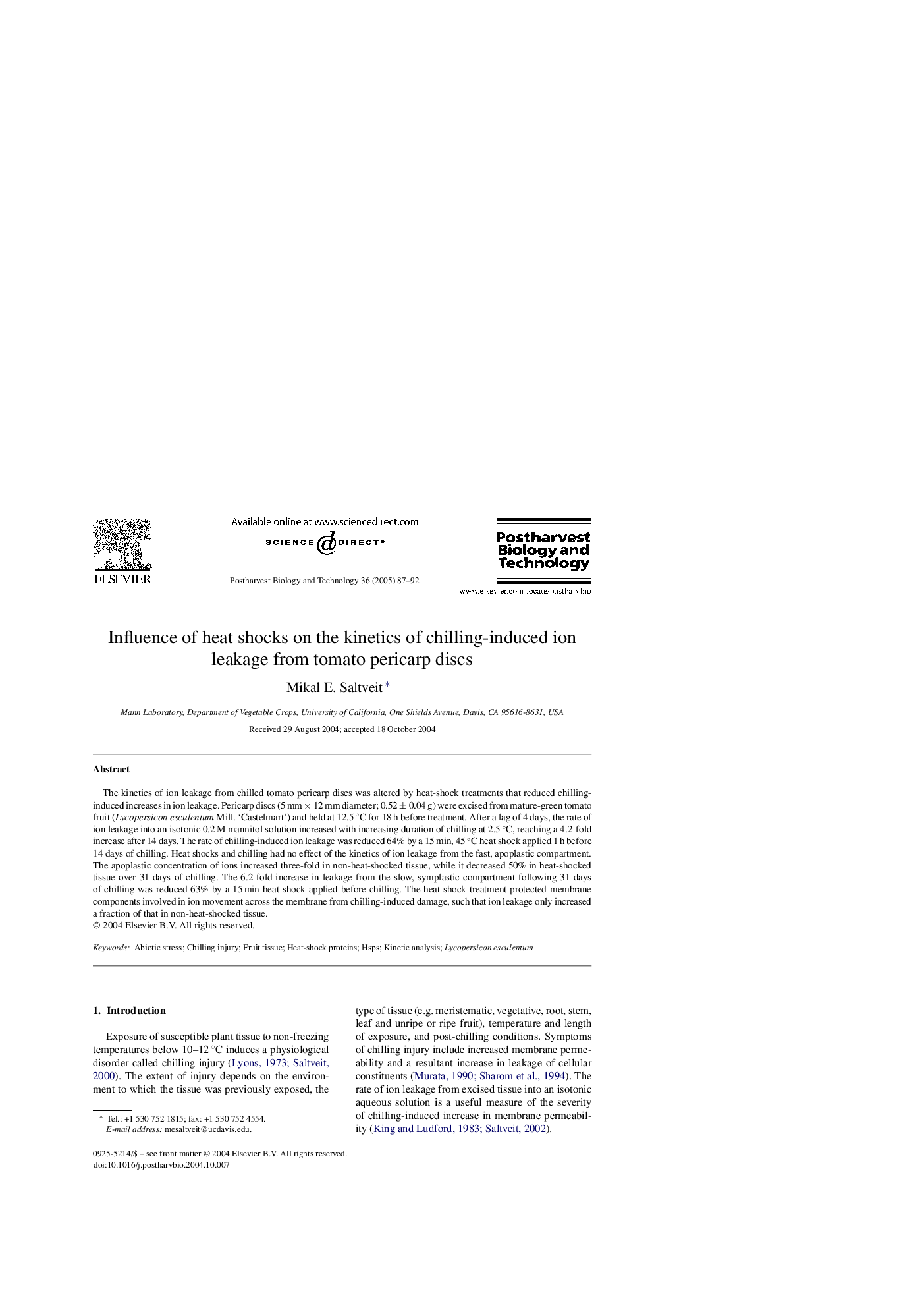| Article ID | Journal | Published Year | Pages | File Type |
|---|---|---|---|---|
| 9475226 | Postharvest Biology and Technology | 2005 | 6 Pages |
Abstract
The kinetics of ion leakage from chilled tomato pericarp discs was altered by heat-shock treatments that reduced chilling-induced increases in ion leakage. Pericarp discs (5 mm Ã 12 mm diameter; 0.52 ± 0.04 g) were excised from mature-green tomato fruit (Lycopersicon esculentum Mill. 'Castelmart') and held at 12.5 °C for 18 h before treatment. After a lag of 4 days, the rate of ion leakage into an isotonic 0.2 M mannitol solution increased with increasing duration of chilling at 2.5 °C, reaching a 4.2-fold increase after 14 days. The rate of chilling-induced ion leakage was reduced 64% by a 15 min, 45 °C heat shock applied 1 h before 14 days of chilling. Heat shocks and chilling had no effect of the kinetics of ion leakage from the fast, apoplastic compartment. The apoplastic concentration of ions increased three-fold in non-heat-shocked tissue, while it decreased 50% in heat-shocked tissue over 31 days of chilling. The 6.2-fold increase in leakage from the slow, symplastic compartment following 31 days of chilling was reduced 63% by a 15 min heat shock applied before chilling. The heat-shock treatment protected membrane components involved in ion movement across the membrane from chilling-induced damage, such that ion leakage only increased a fraction of that in non-heat-shocked tissue.
Keywords
Related Topics
Life Sciences
Agricultural and Biological Sciences
Agronomy and Crop Science
Authors
Mikal E. Saltveit,
